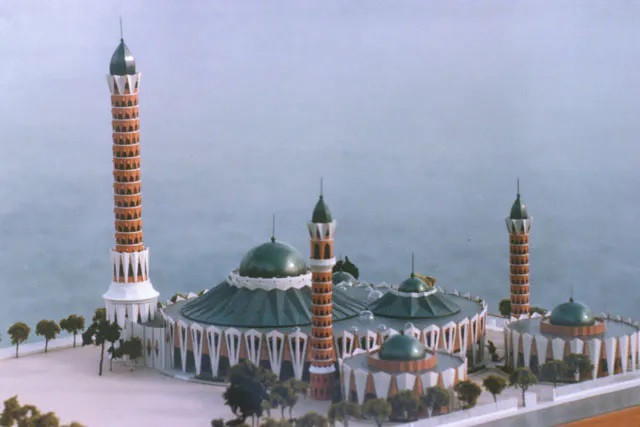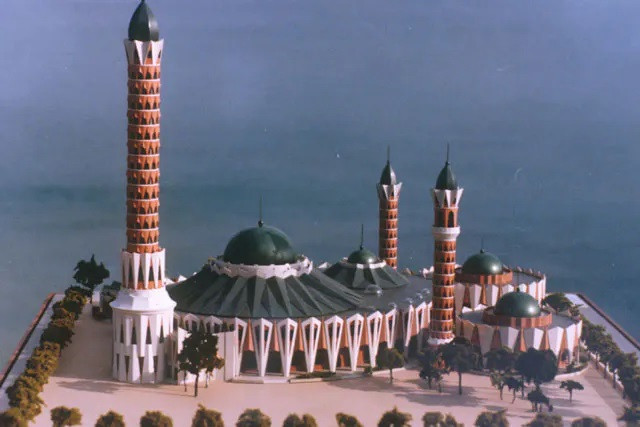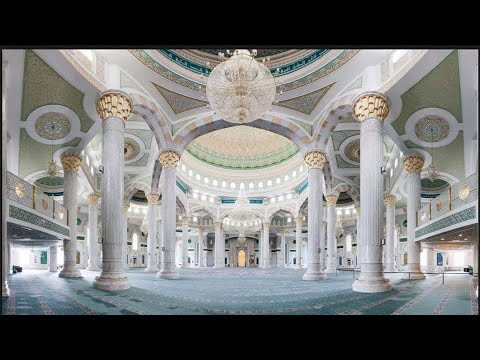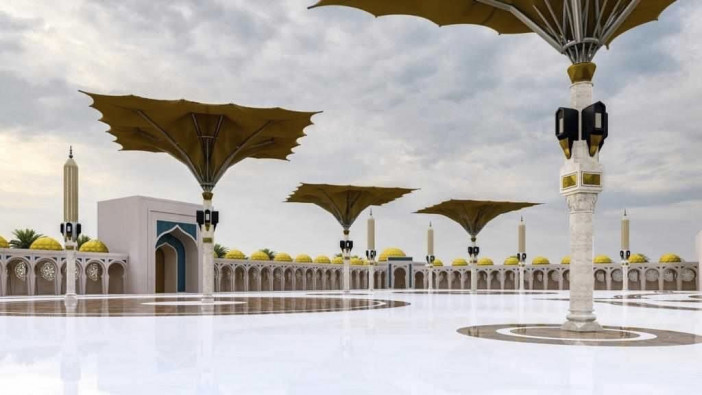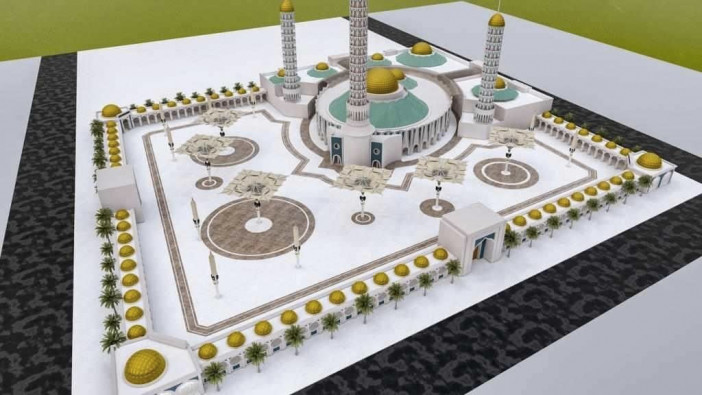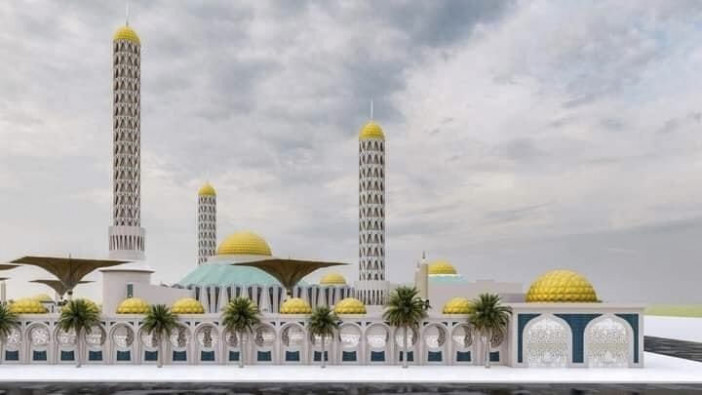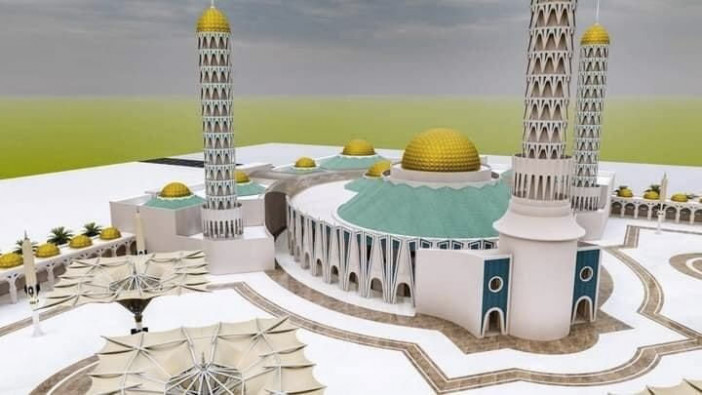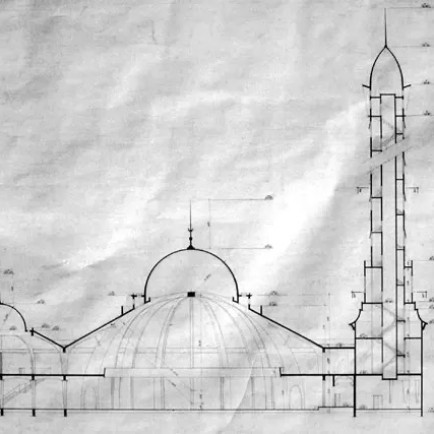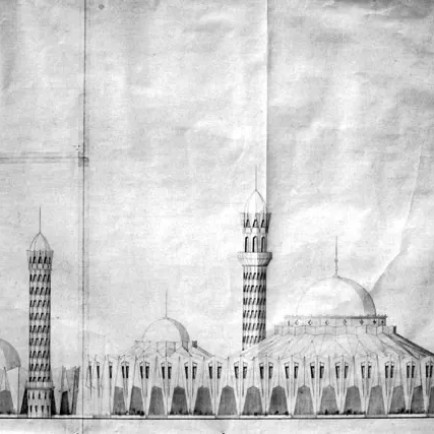The Grand Mosque of Tivaouane ( El Hadji Malick Sy Mosque)
History
The great mosque of Tivaouane was built in 1904 by the great scholar of the Tijaniyya brotherhood of Senegal Elhadji Malick Sy. After several renovations in the 1940s and 1950s, the Tidiane community decided in 1979 to extend the building to accommodate more worshippers. Work began but was halted some time later. In December 1996, a first fundraising campaign was launched to continue the work. This campaign had to take into account the finishing of the minarets. In 2019 the new Khalifa decided to finish the building and asked all Muslims to contribute to the project. Many donors participated in the collection. In September 2020 the work will start again and will last 18 months.
Urban and Architectural
An islamic complex that went through several extensions through history. intially built on a surface of 1600 square meters. The extension of the mosque includes the large mosque with the prayer room and the Mezzanine, there is also the women's mosque, the library which consists of the old mosque and the annex buildings that must accompany the mosque. And a big square to recieve prayers during the Friday prayers. The mosque has a spiral plan and coronated with 3 minarets and a central dome along with small domes decorating the annexes.
The new extension :
One single figure dominates both the interior and exterior: curving lines. Nothing square about the construction of Tivaouane's new, large mosque, on which work has been going on for more than thirty years. Only the round, long tube that makes up the minaret and is surrounded by spiral stairs is visible from a distance. A little roof with a thin chapeau is at the top, surrounded by iron tubes used as échafauds. This area of the building that is most noticeable always needs a coat of cement to finish it up and paint to embellish it. The sun's rays are introduced into this raide through several improbable small curvy windows.
It overhangs a round dome supported by another structure of the same shape. Except that this one is decorated by other figures. The external structure lets appear the beautiful roundness of the building.
But they attract more inside where, one has the impression to be in a ball. The huge hall is circular. The domed roof on the outside is hollow on the inside. Reinforced concrete piles start from all corners of the building to join in the middle of the hollow. These dozens of arches support the top of the mosque painted in bands of bright colors. The red is next to the yellow, the orange is aligned with the green and the blue is broken with another color pulling towards the purple.
The enclosure of the mosque consists of two levels connected by four staircases arranged according to the circular shape of the building. The upper part opens onto the first floor, forming a continuous and circular balcony. The dividing wall is a strip of cement painted in black and gold. Huge concrete posts, covered with white tiles, extend from the bottom to hit the bottom. The floor, beautiful with its pink and white tiles, needs a sweep. A thick layer of dust eventually fades the color of the tiles. As if the suspended ceiling lights were not enough to bring freshness, fans are hung on the stakes. Floor lamps adorn the walls of the first level.
The building is expected to be completed by 2022
Description
The architects will make this religious temple the first mosque in Africa:
- self-sufficient in electricity thanks to a power plant built to power it;
- that runs from start to finish on green energy (solar);
- with an autonomy in water thanks to a drilling which is dedicated to it;
- that solves the sanitation problem of an entire neighborhood;
- built without a single brick, entirely built on concrete and iron;
- with elevators;
- equipped with three (3) central air-conditioning systems like the Burj Al Arabe in Dubai, capable of distributing fresh air right into the toilets;
- without the slightest touch of paint, it is marble from floor to ceiling;
- with automated umbrellas model Masjid Al Haram of Mecca.
Details
Location
X52Q+X2J Grande Mosquée de Tivaouane, Tivaouane 26381, Senegal
Worshippers
10000
Owners
El-Hadji Malick Sy
Architect Name
Year of Build
1904 and under ongoing extensions (1940-1950-1996-2020-present day)
Area
1600
Drawings
Map
History
The great mosque of Tivaouane was built in 1904 by the great scholar of the Tijaniyya brotherhood of Senegal Elhadji Malick Sy. After several renovations in the 1940s and 1950s, the Tidiane community decided in 1979 to extend the building to accommodate more worshippers. Work began but was halted some time later. In December 1996, a first fundraising campaign was launched to continue the work. This campaign had to take into account the finishing of the minarets. In 2019 the new Khalifa decided to finish the building and asked all Muslims to contribute to the project. Many donors participated in the collection. In September 2020 the work will start again and will last 18 months.
Urban and Architectural
An islamic complex that went through several extensions through history. intially built on a surface of 1600 square meters. The extension of the mosque includes the large mosque with the prayer room and the Mezzanine, there is also the women's mosque, the library which consists of the old mosque and the annex buildings that must accompany the mosque. And a big square to recieve prayers during the Friday prayers. The mosque has a spiral plan and coronated with 3 minarets and a central dome along with small domes decorating the annexes.
The new extension :
One single figure dominates both the interior and exterior: curving lines. Nothing square about the construction of Tivaouane's new, large mosque, on which work has been going on for more than thirty years. Only the round, long tube that makes up the minaret and is surrounded by spiral stairs is visible from a distance. A little roof with a thin chapeau is at the top, surrounded by iron tubes used as échafauds. This area of the building that is most noticeable always needs a coat of cement to finish it up and paint to embellish it. The sun's rays are introduced into this raide through several improbable small curvy windows.
It overhangs a round dome supported by another structure of the same shape. Except that this one is decorated by other figures. The external structure lets appear the beautiful roundness of the building.
But they attract more inside where, one has the impression to be in a ball. The huge hall is circular. The domed roof on the outside is hollow on the inside. Reinforced concrete piles start from all corners of the building to join in the middle of the hollow. These dozens of arches support the top of the mosque painted in bands of bright colors. The red is next to the yellow, the orange is aligned with the green and the blue is broken with another color pulling towards the purple.
The enclosure of the mosque consists of two levels connected by four staircases arranged according to the circular shape of the building. The upper part opens onto the first floor, forming a continuous and circular balcony. The dividing wall is a strip of cement painted in black and gold. Huge concrete posts, covered with white tiles, extend from the bottom to hit the bottom. The floor, beautiful with its pink and white tiles, needs a sweep. A thick layer of dust eventually fades the color of the tiles. As if the suspended ceiling lights were not enough to bring freshness, fans are hung on the stakes. Floor lamps adorn the walls of the first level.
The building is expected to be completed by 2022
Description
The architects will make this religious temple the first mosque in Africa:
- self-sufficient in electricity thanks to a power plant built to power it;
- that runs from start to finish on green energy (solar);
- with an autonomy in water thanks to a drilling which is dedicated to it;
- that solves the sanitation problem of an entire neighborhood;
- built without a single brick, entirely built on concrete and iron;
- with elevators;
- equipped with three (3) central air-conditioning systems like the Burj Al Arabe in Dubai, capable of distributing fresh air right into the toilets;
- without the slightest touch of paint, it is marble from floor to ceiling;
- with automated umbrellas model Masjid Al Haram of Mecca.


